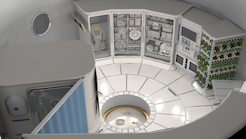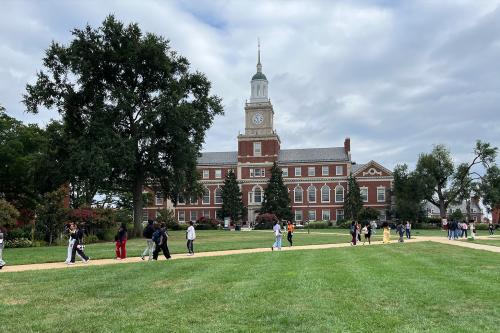WASHINGTON – Preliminary research findings by the Howard University Department of Architecture have led to an understanding of the connection of architecture with allied disciplines in engineering and computer sciences. The department was selected among a team from seven higher education institutions to receive funding tied to a $15M grant from the National Aeronautics and Space Administration (NASA). The grant establishes the Habitats Optimized for Missions of Exploration (HOME) Space Technology Research Institute for Deep Space Habitat Design, one of two space technology research institutes selected by NASA to advance space habitat designs using resilient and autonomous systems. Howard University will receive $500,000 over the five-year grant period.
The HOME team is led by the University of California at Davis and includes partners at the University of Colorado, Boulder; Carnegie Mellon University; Georgia Institute of Technology; Howard University; the University of Southern California and Texas A&M University. Corporate partners are Blue Origin, Sierra Nevada Corporation and United Technologies Aerospace Systems. The team also includes at least three astronauts, who have each been on several space missions.
 Professor and Chair of the Department of Architecture Hazel R. Edwards, Ph.D., serves as Howard’s principal investigator for the project. The smart habitat research will accompany research from other current NASA projects to develop smart habitat technologies and enhance mission architecture. Student and faculty researchers will develop new paradigms for the design of NASA's deep-space habitats which utilize machine learning, artificial intelligence, robotics, and systems automation.
Professor and Chair of the Department of Architecture Hazel R. Edwards, Ph.D., serves as Howard’s principal investigator for the project. The smart habitat research will accompany research from other current NASA projects to develop smart habitat technologies and enhance mission architecture. Student and faculty researchers will develop new paradigms for the design of NASA's deep-space habitats which utilize machine learning, artificial intelligence, robotics, and systems automation.
“This is an exciting opportunity for Howard Architecture at a time when the industry is realizing the full impact that artificial intelligence (AI) and machine learning can have on architectural design and construction, Edwards explains. “For well over three decades, design professionals have been using AI such as computer-aided design to draw and build more complex structures. It creates an interesting opportunity for us as we balance analog (hand drawing) techniques with more advanced digital technologies which can problem solve in a variety of ways.”
Edwards says the NASA grant connects the department with methodology that will enable students in the program to have a heightened understanding and skillset within an evolving aspect of the field.
Assistant Professor of Architecture Dahlia Nduom works with Edwards for the project and aided in selecting six architecture students to embark on research to translate what it means to dwell in a terrestrial condition to living in a zero-gravity scenario. Third-year students Isabella Adekoya, Ebubechukwu Ajayi, Solomon Alverez-Gibson and Jenna Greer, along with fourth year students Alyssa Jenkins and Maya Thornton, explored innovative ways to apply architectural principles of terrestrial dwellings to space habitats.
“This grant is an exciting opportunity to develop design guidelines, which harness the work we do focused on empathetic, human-centered design in terrestrial habitats,” Nduom says. “We are looking forward to expanding our knowledge of deep space habitat design as we embark on this interdisciplinary research.”
To read more about the Habitats Optimized for Missions of Exploration, including specific roles associated with each of the seven institutions, visit https://www.nasa.gov/directorates/spacetech/strg/stri/stri_2018/Habitats_Optimized_for_Missions_of_Exploration_HOME/.
For more information about the Department of Architecture, visit http://www.arch.cea.howard.edu.
###
Image above: Illustration of the interior of a deep space habitat, credits: NASA
About Howard University
Founded in 1867, Howard University is a private, research university that is comprised of 13 schools and colleges. Students pursue studies in more than 120 areas leading to undergraduate, graduate and professional degrees. The University operates with a commitment to Excellence in Truth and Service and has produced one Schwarzman Scholar, three Marshall Scholars, four Rhodes Scholars, 11 Truman Scholars, 25 Pickering Fellows and more than 70 Fulbright Scholars. Howard also produces more on-campus African-American Ph.D. recipients than any other university in the United States. For more information on Howard University, visit www.howard.edu.
Media contact: Ramzey Smith, Office of University Communications, ramzey.smith@howard.edu





